As an Amazon Associate CoffeeXplore.com earns from qualifying purchases.
9 Chic Coffee Table Ideas for Your Living Room: Modern, Wood & More
Ever felt like your living room is almost perfect, but something’s missing? It might be the unsung hero of your seating area: the coffee table. A coffee table can be so much more than just a place to put your drinks; it’s a crucial element of your overall living room design.
What is the main purpose of a coffee table? Beyond holding drinks and remotes, a coffee table anchors the seating area, provides a focal point, offers storage and display space, and ultimately ties the room’s aesthetic together, influencing traffic flow and overall functionality.
As a seasoned interior stylist, I’ve seen firsthand how the right coffee table can transform a room. In this guide, we’ll delve into nine incredibly chic coffee table designs, explore how to choose the perfect one for your space, and uncover expert styling tips. Get ready to discover inspiring ideas, from modern glass creations to rustic reclaimed wood statements, and learn how to make your coffee table a true reflection of your personal style!
Why Do Coffee Tables Matter in Living Room Design?
The main reasons a coffee table matters in living room design lie in its ability to unite functionality, style, and a sense of proportion, enhancing the overall flow and cohesiveness of the living space.
The Role of Coffee Tables in Modern Living Spaces
Modern living spaces often embrace open-concept designs, making furniture arrangement crucial for defining zones. A coffee table strategically placed serves as an anchor for the seating area, creating a clear sense of purpose and delineating the space for conversation and relaxation. Without it, a living room can feel disjointed and lack a focal point. The addition of a surface at the right height encourages social interaction because it provides a convenient place for drinks, snacks, or even playing board games.
Design Impact and Functionality Balance
A coffee table’s design goes beyond mere aesthetics; it impacts the overall feel of your living room. A well-chosen coffee table complements the existing décor, reinforcing the chosen style, whether it’s minimalist, bohemian, industrial, or something else entirely. For instance, a sleek, glass-topped coffee table enhances a modern aesthetic, while a rustic wooden one adds warmth to a farmhouse-inspired room. Think about the lines, materials, and colors, and how they integrate with your sofa, rug, and other furnishings. Finding that balance between beautiful design and everyday practicality ensures your coffee table is both stylish and functional.
What Are Today’s Most Stylish Coffee Table Ideas?
The latest trends in coffee tables include unique designs like cloud shapes, minimalist Scandinavian styles, and functional storage options, offering a variety of choices to enhance any living room aesthetic.
1. Cloud-Shaped Wooden Coffee Table
Cloud-shaped coffee tables bring a soft, organic element to a living room, providing a contemporary, whimsical touch that contrasts with traditional rectangular shapes.
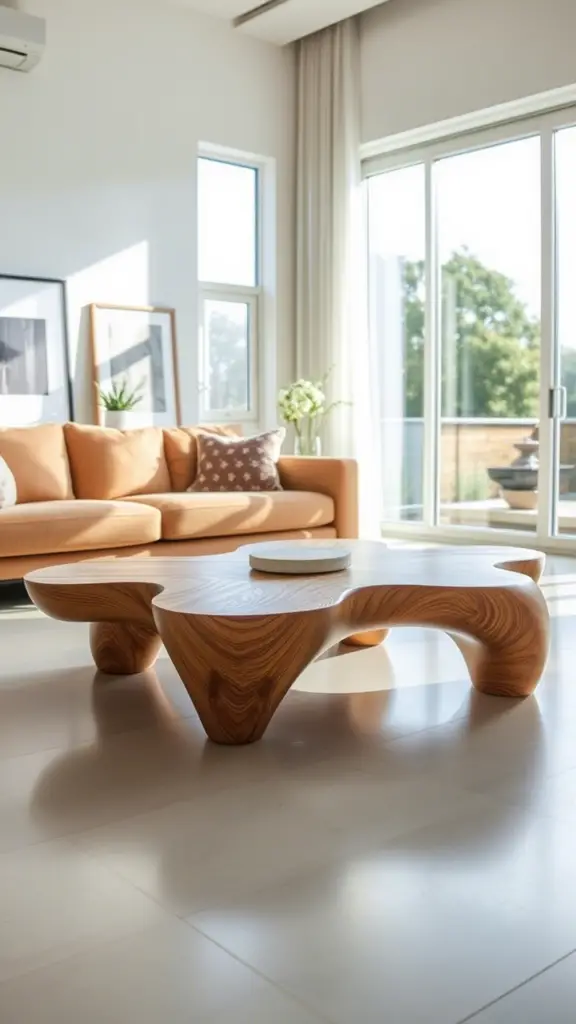
The cloud-shaped coffee table is a departure from the traditional. Its undulating form brings a playful, yet sophisticated vibe to any space. Often crafted from light-colored wood, this design pairs beautifully with modern and minimalist interiors. Key Takeaway: The cloud shape adds a unique sculptural element, acting as a conversation starter and a visual centerpiece.
Scandinavian minimalist coffee tables prioritize clean lines, functionality, and light wood tones, promoting a sense of calm and uncluttered elegance in the living room.
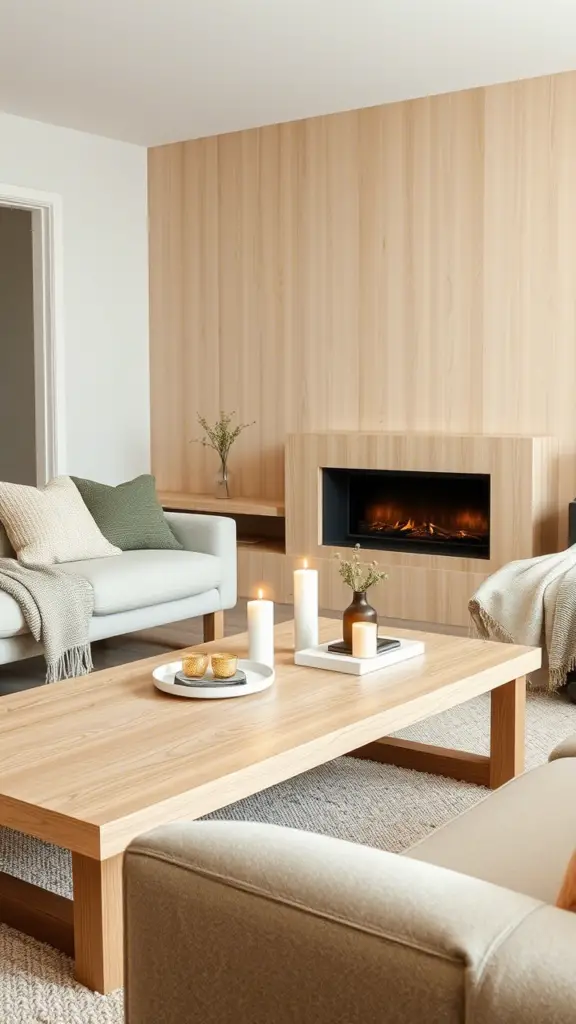
Embracing the “less is more” philosophy, Scandinavian design focuses on simplicity and functionality. These coffee tables often feature light wood tones like birch or beech and clean, straight lines. The use of natural materials and a neutral palette creates a sense of calm and serenity. Tip: Pair a Scandinavian coffee table with a textured rug and soft throws for a cozy, inviting atmosphere.
3. Storage Coffee Table with Drawers
Storage coffee tables with drawers provide discreet organization, helping to keep living room clutter at bay while maintaining a stylish and streamlined appearance.
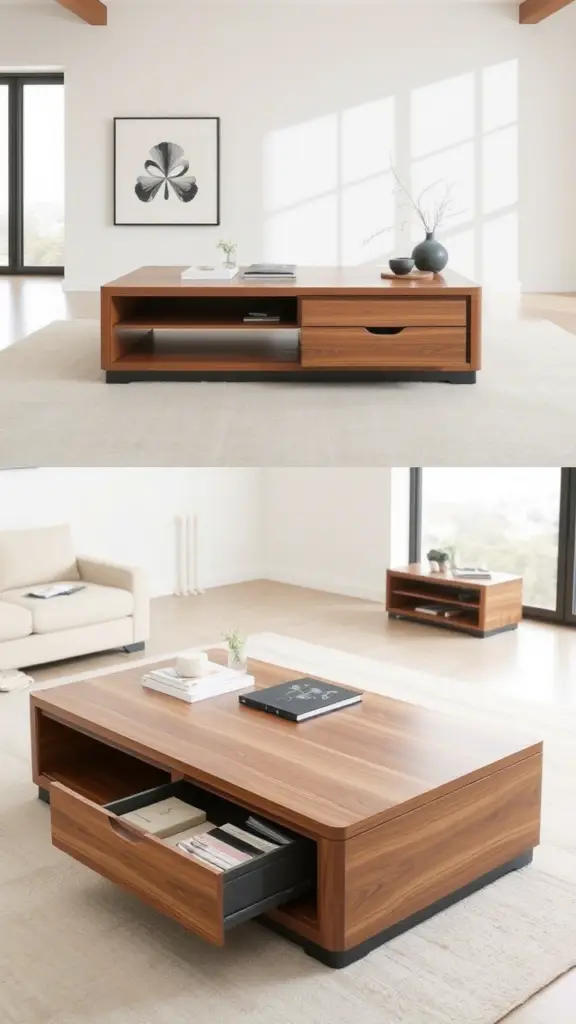
For those who crave both style and practicality, a storage coffee table is a game-changer. Hidden drawers offer a place to stash remotes, magazines, coasters, and other living room essentials, keeping your space tidy and clutter-free. This type of coffee table is particularly beneficial in smaller living rooms where maximizing space is essential.
4. Modern Glass and Wood Combination
Coffee tables that combine glass and wood elements merge transparency and warmth, creating a sophisticated, airy look that complements a variety of modern interior styles.
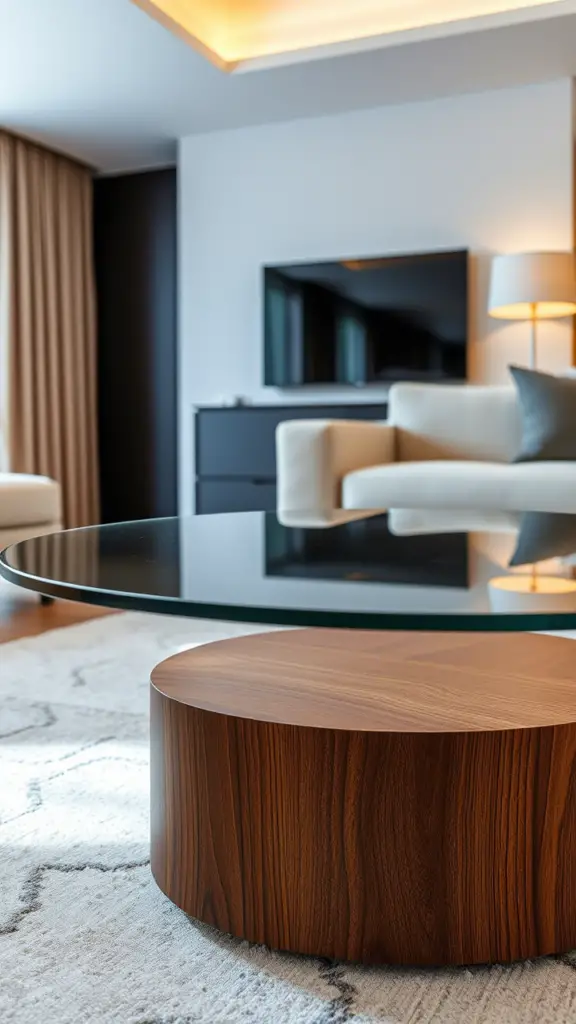
The juxtaposition of glass and wood creates a visually striking and contemporary look. A glass top adds a sense of lightness and airiness, while a wooden base provides warmth and grounding. This combination works well in a variety of settings, from modern to transitional. Key Takeaway: This style highlights the beauty of both materials, offering a balance of transparency and solidity.
5. Handcrafted Boho Wood Table
Handcrafted Boho wood coffee tables bring a unique, artistic touch to a living room, showcasing natural textures and organic forms that embody a relaxed, eclectic style.
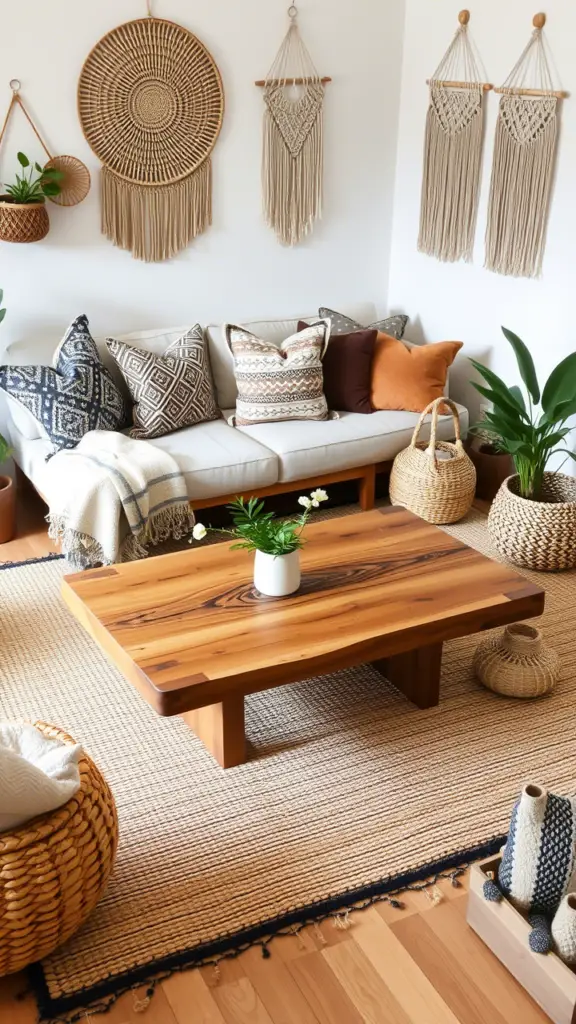
Bohemian style is all about embracing individuality and natural elements. A handcrafted wooden coffee table, often featuring intricate carvings or unique wood grains, adds a touch of artistry and personality to your living room. This style often incorporates sustainable materials and a sense of global influence.
6. Japandi-Style Coffee Table
Japandi-style coffee tables blend Japanese minimalism with Scandinavian functionality, resulting in a serene, elegant design that emphasizes clean lines and natural materials.
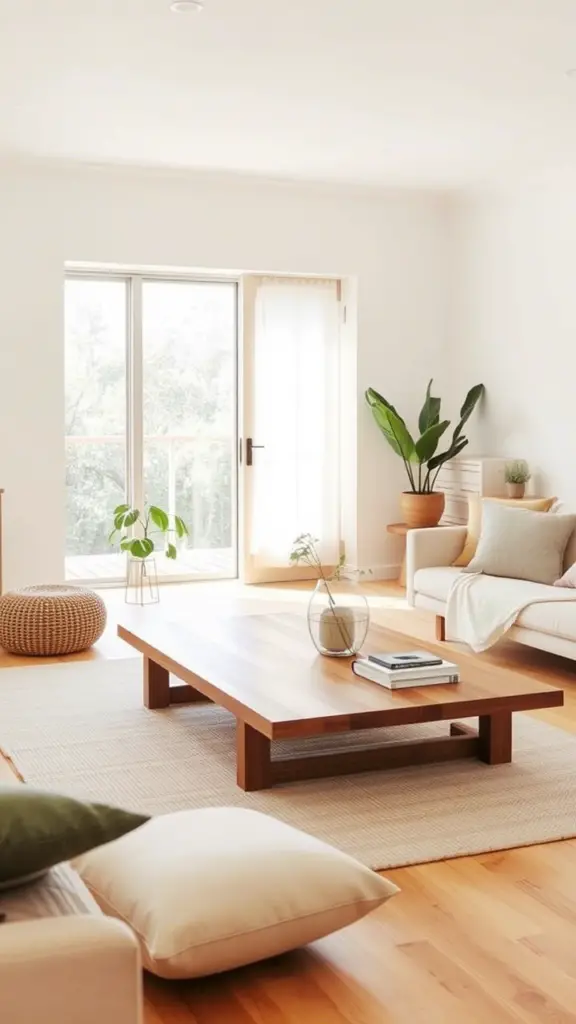
Japandi, a fusion of Japanese and Scandinavian design principles, is gaining popularity for its calming and minimalist aesthetic. Japandi coffee tables typically feature clean lines, low profiles, and natural materials like light-toned wood. Tip: Complement a Japandi coffee table with simple, uncluttered décor and a neutral color palette.
7. Nesting Coffee Tables Set
Nesting coffee tables offer flexible surface area and space-saving design, allowing for versatile arrangements that can adapt to different needs and room configurations.
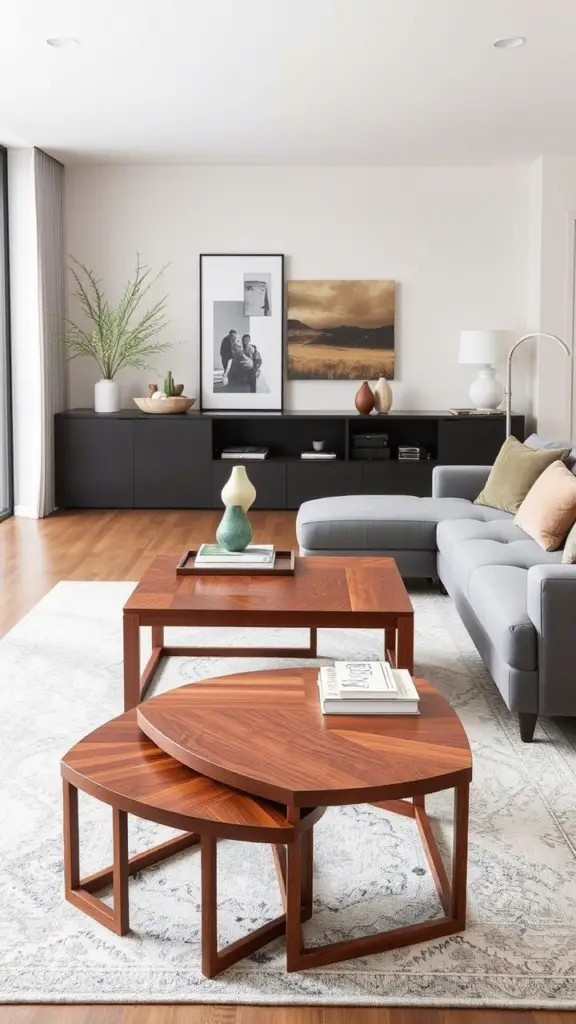
Nesting tables provide versatility and functionality. This set of two or three tables of varying sizes can be arranged together for a layered look or used separately as needed. Nesting tables are a clever solution for small spaces, allowing you to easily expand your surface area when entertaining guests.
8. Reclaimed Wood Statement Piece
Reclaimed wood coffee tables add character and a sense of history to a living room, using repurposed materials to create a unique, sustainable, and visually striking focal point.
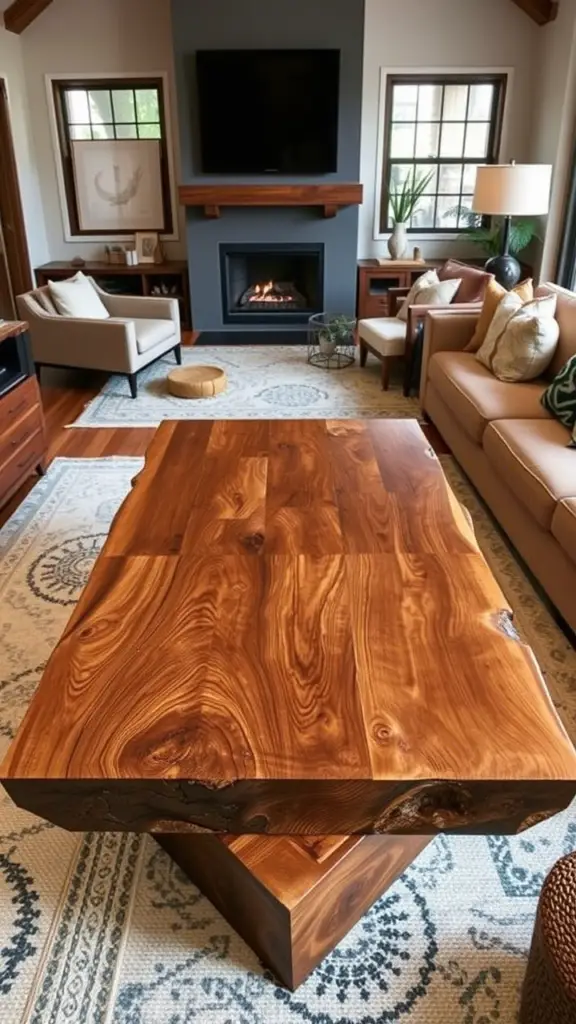
Reclaimed wood coffee tables bring a unique, rustic charm to any living room. Each piece tells a story, showcasing the wood’s history and character through its knots, grains, and imperfections. This eco-friendly option adds warmth and texture, creating a focal point that’s both stylish and sustainable.
9. Mini Coffee Table for Small Spaces
Mini coffee tables provide a functional surface without overwhelming a compact living room, offering a stylish solution that maximizes space while maintaining a balanced aesthetic.
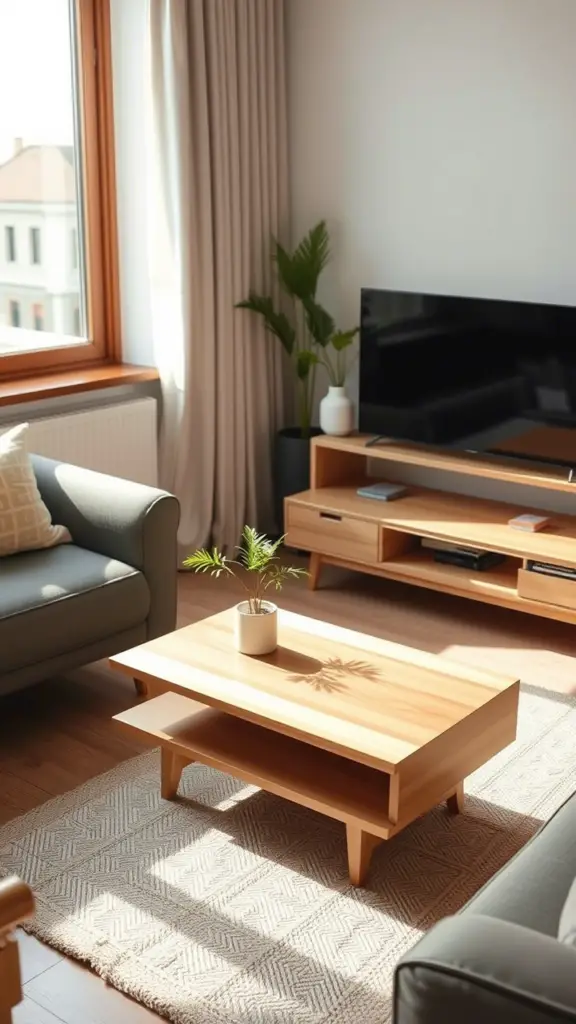
In a small living room, every inch counts. A mini coffee table provides the necessary surface area without overwhelming the space. These smaller-scale tables often feature clever designs, such as slim legs or open bases, to create a sense of airiness.
Key Takeaway: Mini coffee tables prove that style doesn’t have to be sacrificed for space.
How Should You Choose the Perfect Coffee Table?
Choosing the right coffee table depends on the following factors: the size of your living room, your sofa, your chosen interior design style, and the materials you like.
Size and Scale Guidelines
Accurately assessing the size and scale of a coffee table ensures proper proportion to the sofa and surrounding space, optimizing both visual harmony and comfortable functionality.
The size of your coffee table should be proportionate to your sofa and the overall dimensions of your living room. A general rule of thumb is that the coffee table should be about two-thirds the length of your sofa. The height should be roughly the same as, or slightly lower than, the seat height of your sofa. This ensures both visual balance and comfortable reach.
Material Selection Tips
Choosing the right coffee table material involves considering durability, maintenance, and aesthetic compatibility with the existing decor, ensuring both practicality and visual appeal.
Consider your lifestyle and the overall aesthetic of your living room when selecting a material. Glass can create a sense of spaciousness, while wood adds warmth and durability. Metal offers a sleek, industrial look. Think about the maintenance requirements of each material as well. For example, glass may require more frequent cleaning to maintain its pristine appearance.
Style Matching Principles
Matching a coffee table to the existing style involves considering the overall design aesthetic, ensuring that the table complements the room’s furniture, color palette, and decorative elements.
Your coffee table should complement the existing style of your living room. If you have a modern aesthetic, opt for clean lines and sleek materials. For a traditional look, consider a classic wooden coffee table with intricate details. A bohemian style might call for a handcrafted piece with natural textures.
What Are the Best Ways to Style Your Coffee Table?
Effective coffee table styling relies on layering different elements, incorporating varying heights and textures, and creating a visually balanced arrangement that complements the room’s overall decor.
Layering Techniques
Layering on a coffee table involves arranging items of different heights and textures, creating visual interest and depth while maintaining a cohesive and balanced composition.
Start with a base, such as a tray or a stack of books. Then, add decorative objects of varying heights, such as a vase with flowers, a candle, or a small sculpture. Incorporate different textures, like a woven basket or a smooth ceramic bowl. Tip: The “rule of three” is a helpful guideline – grouping objects in odd numbers often creates a more visually appealing arrangement.
Seasonal Styling Tips
Seasonal coffee table styling involves updating the decor with elements that reflect the current time of year, incorporating colors, textures, and motifs that evoke the specific season’s atmosphere.
Refresh your coffee table styling with the changing seasons. In the fall, incorporate warm colors, natural elements like pumpkins or gourds, and cozy textures. In the spring, opt for fresh flowers, lighter colors, and airy accents. Key Takeaway: Seasonal styling keeps your living room feeling fresh and inviting throughout the year.
FAQs About Coffee Tables in Living Rooms:
1. What size coffee table should I get for my living room?
Generally, your coffee table should be about two-thirds the length of your sofa and the same height as, or slightly lower than, your sofa cushions.
2. How much space should there be between a coffee table and sofa?
Aim for about 14-18 inches of space between your coffee table and sofa to allow for comfortable legroom and easy movement.
3. What materials are most durable for coffee tables?
Hardwoods like oak, maple, and walnut are very durable. Metal and tempered glass are also strong and long-lasting options.
4. Should coffee tables match other living room furniture?
While not mandatory, your coffee table should complement your other furniture. It doesn’t need to be an exact match, but it should share a similar style or aesthetic.
5. What height should a coffee table be compared to sofa height?
Ideally, your coffee table should be the same height as your sofa cushions or 1-2 inches lower. This provides a comfortable reach and a balanced look.
Summary:
Choosing the right coffee table involves considering size, material, and style to ensure it complements your living room’s design and meets your functional needs. From cloud-shaped designs to practical storage options, there’s a perfect coffee table for every space. Remember to prioritize proportion, balance, and your personal style when making your selection. With the right choice and thoughtful styling, your coffee table can become a stunning focal point and a true reflection of your home’s personality. What’s the first thing you’re going to do to refresh your coffee table?

